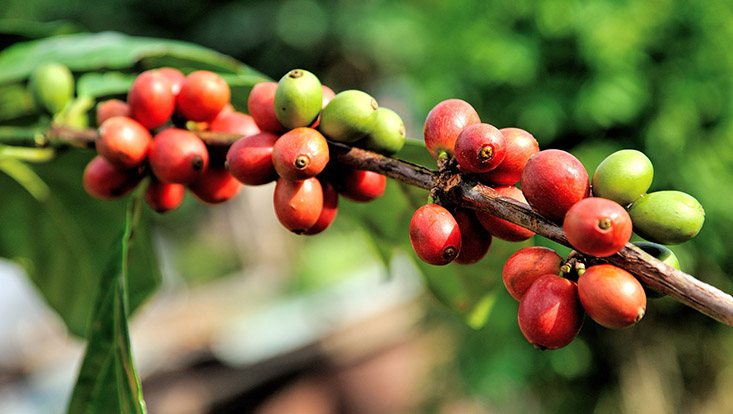How are coffee plantations coping with climate change?
28 June 2017, by CEN Universität Hamburg

Photo: pixabay
A new tool was developed at the Center for Earth System Research and Sustainability. It offers valuable support to help farmers judge whether or not their land is suitable for growing coffee. We spoke with geo-ecologist Dr. Livia Rasche:
Can you still enjoy drinking coffee?
Yes, I can! But I also give some thought to whether I’ll be able to keep drinking it in the future – and how much it will cost.
Why?
We’re currently investigating how climate change will impact coffee. We can already predict that the amount of suitable land mass will shrink in Central America.
What type of land is best suited?
Areas with an annual mean temperature between 18 and 23 degrees Celsius, sufficient rainfall, soil pH values within a specific range, and preferably with loam or clay components. Sandy soils are a definite no-go.
But coffee farmers surely know that already. Why do they need a land suitability model?
We’ve developed the first effective decision-making tool for this context. It makes it relatively easy to determine whether coffee can successfully be cultivated in a new parcel of land. At the same time, we can always feed changes into the model. For example, if I expect temperatures to rise and to see more dry spells within the next ten years, will planting coffee there pay off?
And the model can answer that question?
The model can be used for Central America at an extremely high resolution, all the way down to specific parcels of land. To make it work, I also need specific data, like the pH values, mean temperature, precipitation and soil qualities for my region. One major advantage of the model: if I don’t know a specific value, I can also enter a general range.
The model then calculates how well-suited an area is for cultivating coffee – we use the species Coffea arabica. It produces a score of between zero and 100 percent. If the score is 60 percent or more, I know I can plant coffee there; if it’s 90 percent or more, I can expect excellent crop yields.
How does it work?
My team works with what are called Bayes networks, a mathematical method used to gauge probabilities. These networks can help make the optimal decision when several interacting factors are involved. When it comes to coffee beans, we grouped together the individual factors and assigned them respective values on the basis of previous studies on coffee cultivation. In brief, whether or not coffee will thrive is 49 percent climate, 36 soil and 15 percent land form, for example, how steep the cultivated hillside is.
Where can farmers find the model?
The tool is freely accessible online. In the future, the method could easily be adapted for other regions or crops.
Interview: Stephanie Janssen
Original article: Leonel Lara Estrada, Livia Rasche, Uwe A. Schneider (2017): Modeling land suitability for Coffea arabica L. in Central America; Environmental Modelling & Software, Volume 95, 2017, Pages 196–209
Land suitability model
Contact:
Dr. Livia Rasche
Centrum für Erdsystemforschung und Nachhaltigkeit (CEN)
Universität Hamburg
Grindelberg 5, 20144 Hamburg
+49 40 42838 7243
livia.rasche"AT"uni-hamburg.de
